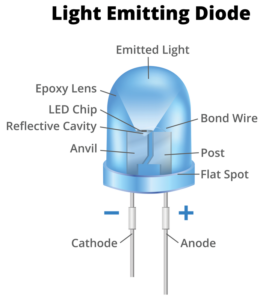 Understanding LED Lighting: How It Works and Fascinating Facts
Understanding LED Lighting: How It Works and Fascinating FactsLight Emitting Diodes, commonly known as LEDs, have revolutionized the lighting industry with their efficiency and versatility. This article delves into what LEDs are, their operational mechanism, and some intriguing facts about LED lighting.
An LED is a semiconductor device that emits light when an electric current passes through it. Unlike traditional incandescent bulbs that generate light through heating a filament, LEDs produce light through a process called electroluminescence. This method allows LEDs to be more energy-efficient and longer-lasting.
 How Do LEDs Work?
How Do LEDs Work?LEDs consist of two layers of semiconductor materials: one with positive charge (p-type) and one with negative charge (n-type). When voltage is applied, electrons move across the junction between these layers, releasing energy in the form of photons—the basic units of light. The color of the emitted light depends on the materials used in the semiconductor and the energy gap between the layers.
Given their numerous advantages, integrating LED lighting into your home or business is a wise choice. Whether you’re looking to enhance ambiance with color-changing strips or reduce energy costs with efficient fixtures, LEDs offer a solution tailored to your needs.
St. Louis County | St. Louis City | St. Charles County | Jefferson County | Franklin County | Lincoln County | Warren County | Washington County | Southern Illinois | Downtown | Midtown | Benton Park | Carondelet | Central West End | Skinker/DeBaliviere | Dogtown | Maplewood | Richmond Heights | Dutchtown | Forest Park | Grand Center | The Hill | Lafayette Square | LaSalle Park | Shaw | Southampton | South City | Southwest Garden | Soulard | Tower Grove | Hortense Place | Holly Hills | St. Louis Hills | Wydown/Skinker | Clayton | Brentwood | Ladue | Huntleigh | Warson Woods | University City | Olivette | Overland | Bridgeton | Creve Coeur | Town & Country | Des Peres | Rock Hill | Webster Groves | Kirkwood | Glendale | Crestwood | Sunset Hills | Fenton | Valley Park | Affton | Bayless | Mehlville | Oakville | Pacific | Arnold | Chesterfield | Manchester | Ballwin | Wildwood | New Town | Bevo Mill | Boulevard Heights | Carr Square | Cheltenham | Clayton/Tamm | Clifton Heights | College Hill | Columbus Square | Compton Heights | DeBaliviere Place | Downtown West | Ellendale | Fairground | Forest Park Southeast | Fountain Park | Fox Park | Franz Park | Gravois Park | Hamilton Heights | Hi-Pointe | Hyde Park | JeffVanderLou | Kings Oak | Kingsway East | Kingsway West | Kosciusko | LaSalle Park | Lewis Place | Lindenwood Park | Marine Villa | Mark Twain | Mark Twain/I-70 Industrial | McKinley Heights | Mount Pleasant | Near North Riverfront | North Hampton | O’Fallon | Old North St. Louis | Patch | Peabody/Darst/Webbe | Penrose | Princeton Heights | Riverview | St. Louis Place | The Gate District | The Greater Ville | The Ville | Tiffany | Tower Grove East | Tower Grove South | Vandeventer | Visitation Park | Walnut Park East | Walnut Park West | Wells/Goodfellow | Central West End